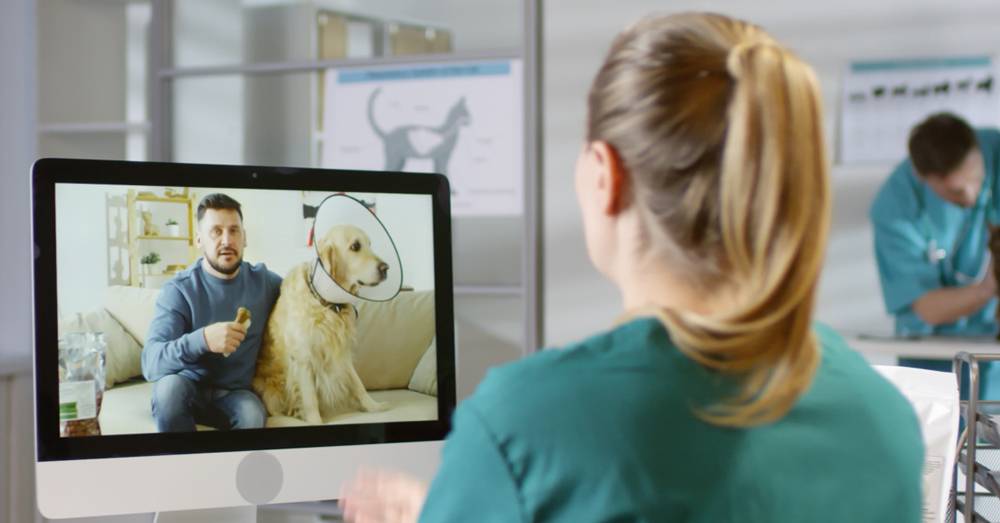
How Telemedicine is Changing Veterinary Care
Just a few years ago, the idea of consulting a vet from your living room might have seemed far-fetched. But with the rise of digital tools and growing demand for accessible pet care, pet telemedicine is fast becoming a standard option for concerned pet owners. From minor ailments to follow-up care, the ability to speak with a qualified professional without stepping into a clinic is transforming how we approach veterinary support.
Driven by both necessity and innovation, virtual vet consultations offer convenience, comfort, and cost-effective solutions. Whether you’re managing an anxious cat, a senior dog with mobility issues, or living in a rural area with limited veterinary access, online veterinary services bridge the gap between timely advice and in-clinic care.
In this guide, we’ll explore how telemedicine is reshaping pet healthcare, what types of services are available, the pros and cons, and how to get the most out of your digital vet experience.
What Is Pet Telemedicine?
Pet telemedicine involves the remote delivery of veterinary services using telecommunications technology. This includes video calls, online chat, mobile apps, and even wearable tech integrations.

Common Services Offered:
- General health consultations
- Post-operative follow-ups
- Nutrition and weight management advice
- Behavioural assessments
- Prescription refills (where permitted)
- Emergency triage and advice
Telemedicine is not designed to replace in-person veterinary care entirely, but it serves as a convenient supplement for non-urgent needs and routine guidance.
The Rise of Virtual Vet Consultations
Why It’s Gaining Popularity
- Convenience for Owners
- No travel, waiting rooms, or scheduling hassles
- Especially beneficial for working professionals and parents
- Stress-Free for Pets
- Ideal for animals who get anxious or aggressive during vet visits
- Keeps pets in their familiar environment
- Accessibility
- Beneficial for rural or remote communities with limited veterinary access
- A lifeline during emergencies when clinics are closed
- Cost-Effective
- Typically lower fees than in-clinic visits
- Reduces the need for unnecessary trips to the vet
The COVID-19 pandemic also accelerated the adoption of virtual vet consultations, proving that many routine concerns could be handled effectively online.
Types of Online Veterinary Services Available
Online veterinary services range in scope and function. Here are the most common models:

1. Real-Time Video Consultations
- Direct communication via Zoom, Skype, or proprietary platforms
- Used for visible issues like rashes, limping, or behaviour changes
- Enables detailed history discussion and visual examination
2. Chat and Messaging Services
- Text-based consultation with qualified vets
- Suitable for non-urgent queries, follow-ups, and second opinions
- Often available 24/7 through subscription models
3. Mobile Apps
- Integrated health records, medication reminders, symptom checkers
- Some links to smart collars and pet health trackers
- Examples include FirstVet, PawSquad, and Petriage
4. Prescription Management
- Vets can renew prescriptions or advise on over-the-counter treatments
- In some regions, laws restrict prescriptions without a physical exam—check local regulations
The Pros of Pet Telemedicine
1. Speed and Accessibility
- Get professional advice quickly, often within minutes
- Great for assessing whether a clinic visit is necessary
2. Improved Preventative Care
- Encourages more frequent, low-barrier check-ins
- Owners are more likely to seek advice early, preventing minor issues from escalating
3. Continuity of Care
- Post-op check-ins or ongoing condition management can be monitored remotely
- Ideal for pets with chronic illnesses, like diabetes or arthritis
4. Informed Decision-Making
- Receive trusted insights before rushing to emergency care
- Reduces panic and empowers owners to take the right next steps
The Cons and Limitations
While pet telemedicine is highly valuable, it’s not without limitations.
1. No Hands-On Examination
- Vets can’t palpate, listen to heart/lungs, or take samples
- Limits the ability to make definitive diagnoses
2. Not Suitable for Emergencies
- Severe injuries, poisoning, or acute symptoms need in-person care
- Some providers may help you triage, but will still refer you to a clinic
3. Legal Restrictions
- In the UK, the RCVS (Royal College of Veterinary Surgeons) allows remote consultations but requires physical exams before prescribing many medications
- Services may differ by region or country
4. Technology Challenges
- Poor internet connection or unfamiliarity with apps may hinder the experience
- Older pet owners may need extra support using platforms
Preparing for a Virtual Vet Consultation
To make the most of virtual vet consultations, follow these steps:
Before the Call:
- Write down symptoms, history, and questions
- Note any behavioural changes, eating/drinking habits, or recent incidents
- Gather your pet’s medical history if available
During the Call:
- Use a quiet, well-lit area
- Keep your pet nearby and calm
- Use your phone or camera to show any visible concerns (rashes, limping, swelling)
- Be honest about diet, exercise, and lifestyle habits
After the Call:
- Follow through with recommended actions
- Schedule an in-person visit if advised
- Save notes or advice in a pet health journal or app
When to Use Pet Telemedicine vs. In-Person Visits
Understanding when online veterinary services are appropriate is key to your pet’s health.
Ideal for Telemedicine:
- Skin conditions (rashes, hot spots, itching)
- Digestive issues (vomiting, diarrhoea)
- Mobility concerns (limping, stiffness)
- Behavioural changes or anxiety
- Follow-up care or post-surgery check-ins
- Weight management and nutrition advice
Requires In-Person Care:
- Unconsciousness or seizures
- Serious injuries or wounds
- Difficulty breathing
- Ingestion of toxic substances
- High fever or rapid deterioration
- Blood in stool or urine
- Suspected internal issues
In urgent cases, telemedicine should never delay emergency veterinary attention.
The Future of Telemedicine in Pet Care
Pet telemedicine is still evolving, with new advancements on the horizon:
- AI-driven diagnostics to aid in symptom assessment
- Wearable health trackers integrating with apps for live data sharing
- Remote diagnostics tools (e.g. connected stethoscopes and thermometers)
- Tele-triage bots for instant risk evaluation
As the technology matures and veterinary regulations adapt, expect telemedicine to become an essential component of pet care—not just a convenience.
A Helpful Tool in Modern Pet Parenting
Pet telemedicine is changing how we care for our animals—making veterinary advice more accessible, affordable, and proactive. While it’s not a replacement for hands-on exams or emergency care, it’s an invaluable tool for everyday concerns and ongoing management.
Whether it’s a question about your cat’s diet, a follow-up after surgery, or a late-night worry about your dog’s coughing, virtual vet consultations give you support at your fingertips. With a growing ecosystem of online veterinary services, pet owners are now more empowered than ever to make informed decisions about their animals’ well-being.
Take action today: Explore telemedicine platforms, set up an account, and keep it ready for when you need it. Because when it comes to your pet’s health, convenience and care can—and should—go hand in paw.


